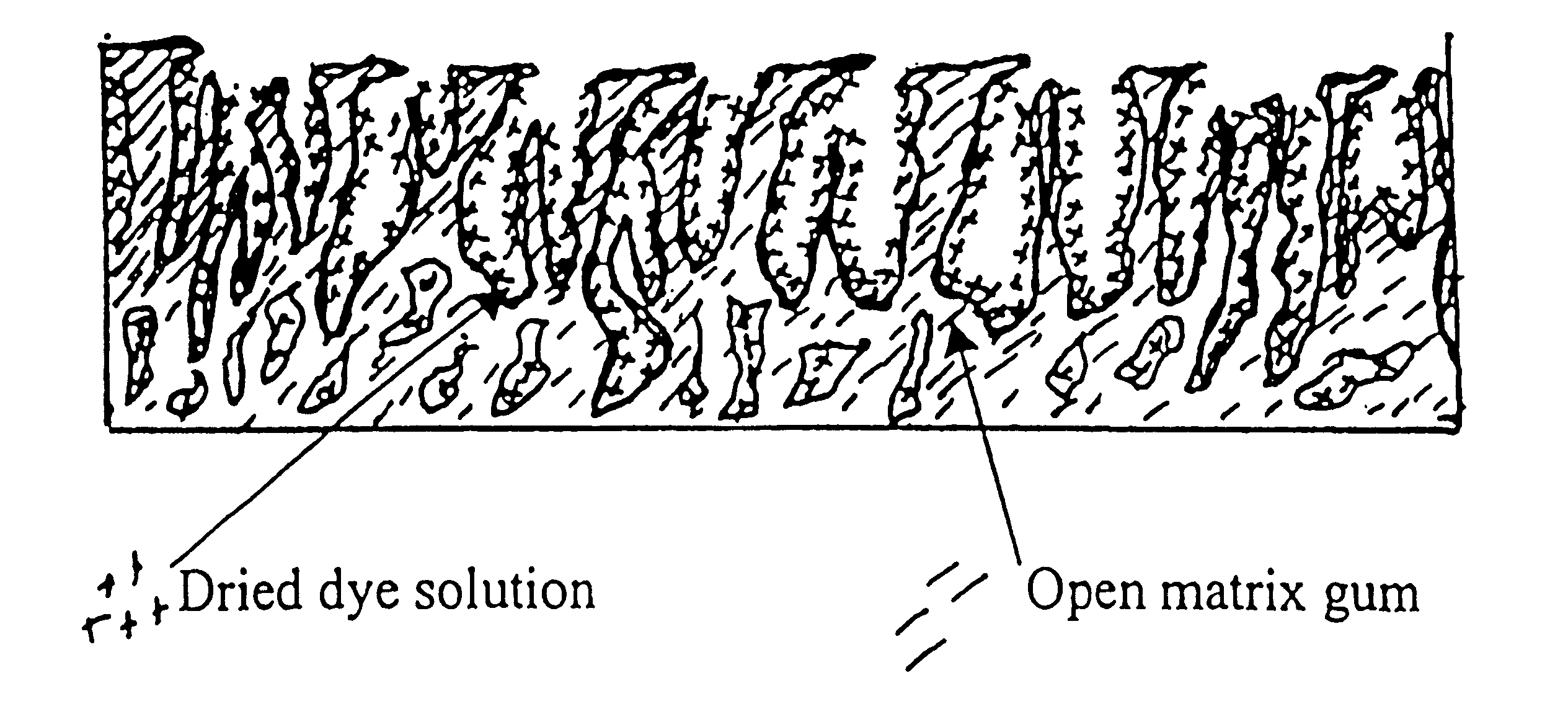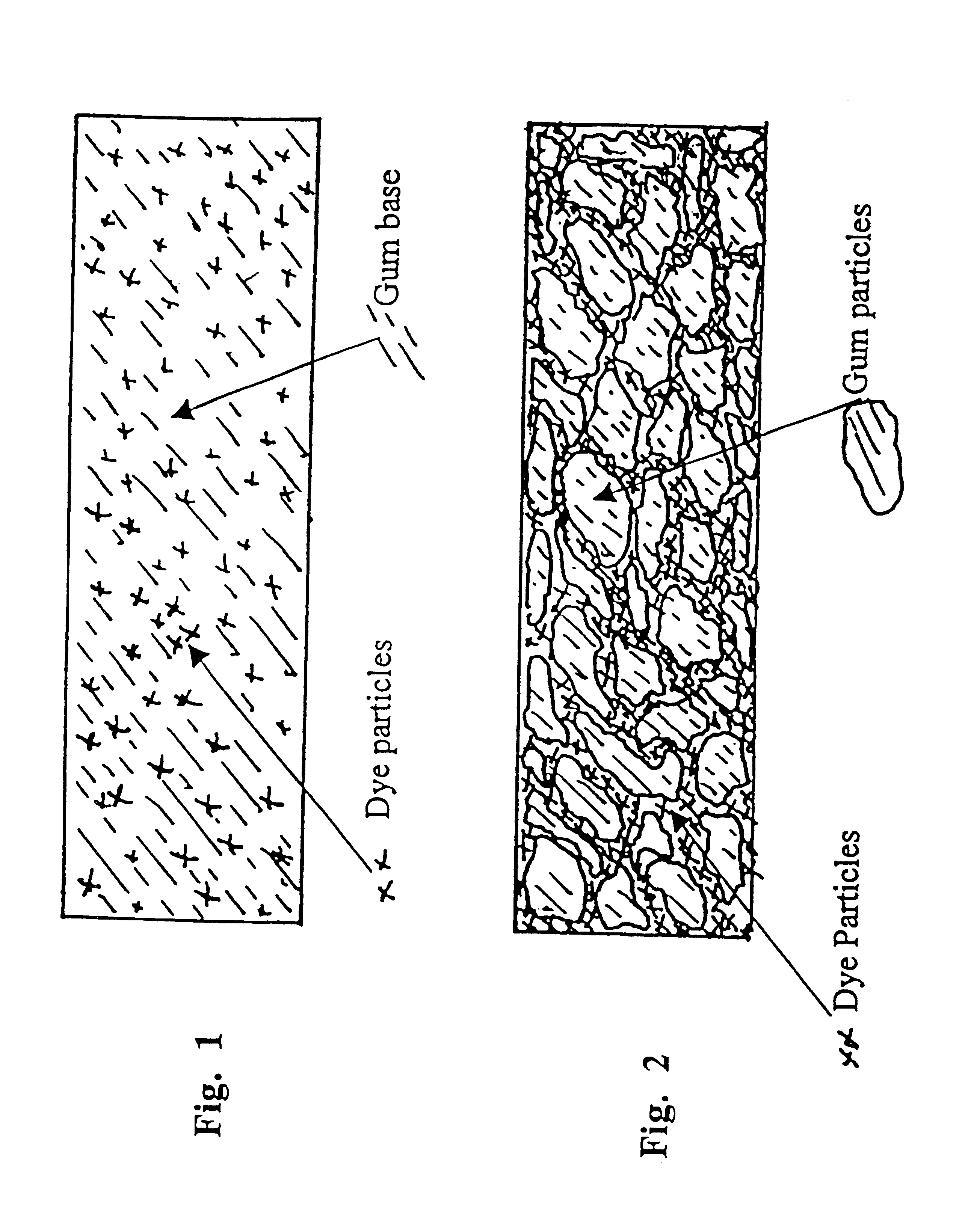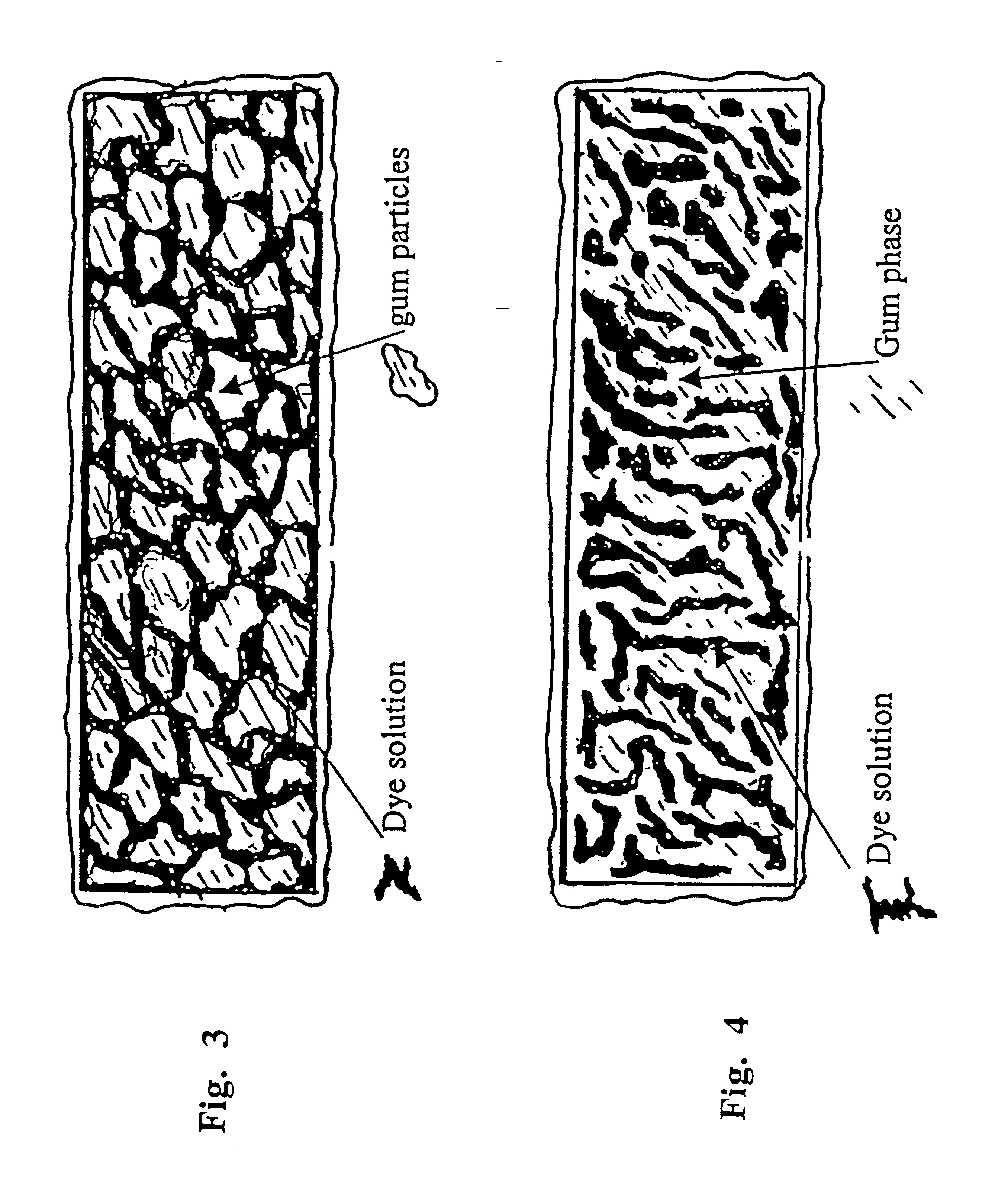Chewing gums and method of manufacturing the same
a manufacturing method and gum technology, applied in the direction of biocide, plant ingredients, containers, etc., can solve the problems of difficult to regulate the amount of active ingredients, difficult to regulate the total dose administered, and difficult to absorb active ingredients which are poorly water-soluble, etc., to achieve the effect of facilitating crystal annealing
- Summary
- Abstract
- Description
- Claims
- Application Information
AI Technical Summary
Benefits of technology
Problems solved by technology
Method used
Image
Examples
example 1
Preparation of gum powder
A standard confectionery gum base (free of flavours and colourings) was used as the starting material for the preparation of a gum powder. Three different methods were used, each of which will be described in turn. Later Examples demonstrate the formulation of the powder in finished chewing gums.
A: Jet milling
Finely chopped pieces of gum (approximately 10 mm cubes) were chilled to -10.degree. C. in a freezer and fed into the hopper of a jet-mill. The mill was driven by nitrogen gas at -70.degree. C. and particle size reduction was achieved by collision in the mill. Particles which were sufficiently reduced in size were entrained in the stream of gas and exited the mill chamber to be recollected in a cyclone apparatus. Recovered particles averaged 50 .mu.m in size (as measured by microscopy).
B: Cryogenic milling
Finely chopped pieces of gum at room temperature were placed in a porcelain mortar and liquid nitrogen was poured on top of them, (the mortar was pre-...
example 2
Replication of industry standard hot melt process (comparison example only).
Red food dye (cochineal) as a dry powder was added to the powdered gum base (prepared according to Example 1A) in an amount of 10% w / w and mixed at 60.degree. C. The molten mixture was spread onto a cool surface and allowed to set at room temperature. Superficially the gum had an intense red colour. The mass was chilled in a refrigerator and broken. The fractured surface was examined under magnification, it was apparent that the dye was dispersed as discrete particles in a uniform gum structure. A representation of the fractured surface is provided in FIG. 1.
example 3
Replication of dry powder compression process (comparison example only).
A 10% w / w mixture of cochineal in powdered gum (prepared according to Example 1A) was blended thoroughly. The mixture was compressed into a slab at room temperature. The slab of thus prepared gum was again chilled in a refrigerator and broken. The fractured surface was again examined under magnification, and in this case the red dye was visible as particles coating discrete pieces of the powdered gum. A representation of the fractured surface is provided in FIG. 2.
PUM
| Property | Measurement | Unit |
|---|---|---|
| freezing point | aaaaa | aaaaa |
| melting point | aaaaa | aaaaa |
| temperatures | aaaaa | aaaaa |
Abstract
Description
Claims
Application Information
 Login to View More
Login to View More - R&D
- Intellectual Property
- Life Sciences
- Materials
- Tech Scout
- Unparalleled Data Quality
- Higher Quality Content
- 60% Fewer Hallucinations
Browse by: Latest US Patents, China's latest patents, Technical Efficacy Thesaurus, Application Domain, Technology Topic, Popular Technical Reports.
© 2025 PatSnap. All rights reserved.Legal|Privacy policy|Modern Slavery Act Transparency Statement|Sitemap|About US| Contact US: help@patsnap.com



